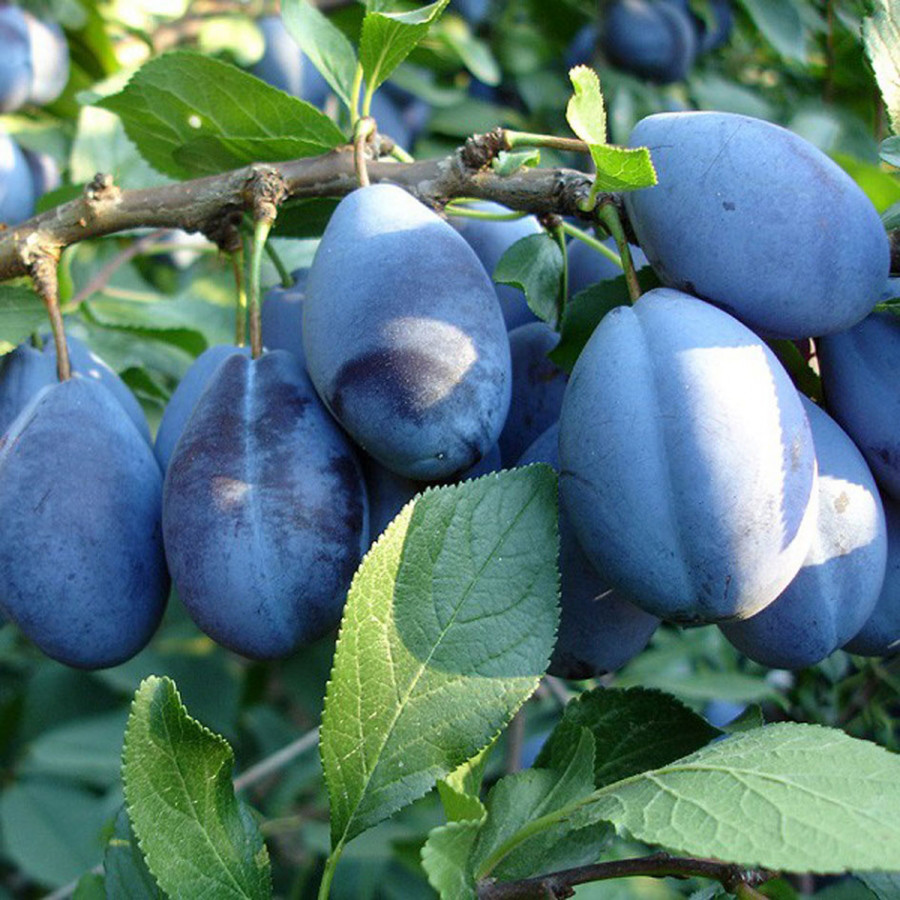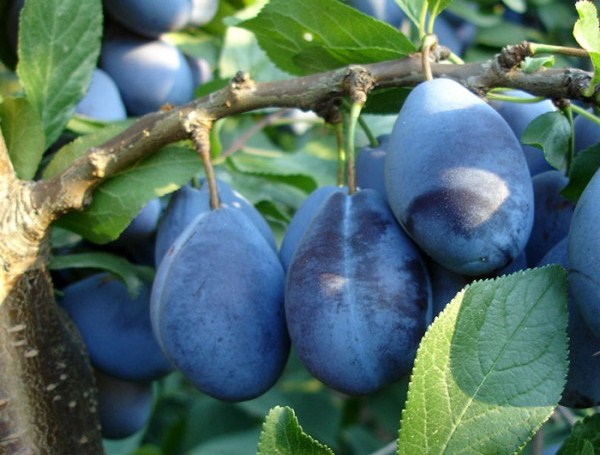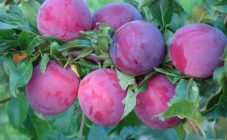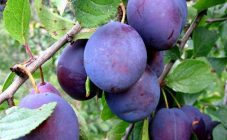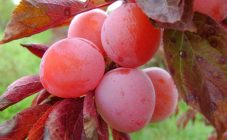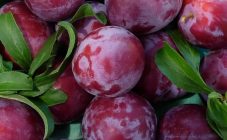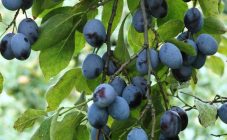Content:
Juicy and fragrant plum Stanley (Stanley) is a variety of Hungarian, for several decades it has been holding a leading position among Russian gardeners among other breeding novelties. This variety is actively grown in the Moscow region and Siberia. It is Stanley Plum that has stood the test of time.
To understand why a variety is so trusted, you need to know more about it and its characteristics.
The history of the creation of the variety
The variety was bred by the famous professor Richard Wellington at an agricultural station in the United States.
In the 20th century, he experimented with the crossing of different garden and vegetable crops. In one of the experiments Wellington used the famous French variety Pruneau Daagen and the American Grand Duke as "parents".
The result of the study was a plum of the Vengerka group, bred in 1926. From the French variety, she inherited a sweet and sour taste and exquisite aroma, and from the American one - frost resistance, a bountiful harvest.
The variety was named "Stanley", less often it is called "Stanley".
It was brought to Russia in 1983.
Characteristics
Variety characteristics table:
| Description of the Stanley variety by assessment parameters | |
|---|---|
| Tree options | · Average height - 2.8 m. · The tree is medium-sized or vigorous, with a straight dark-gray stem with a medium degree of peeling (part of the stem between the stem and the first skeletal branch). · Leaves of the variety are rounded, with a blunt end. Average size: about 6-7 cm long, 4 cm wide. Medium concavity at leaves. The fabric is loose. · Crohn's rare, rounded shape. · Shoots of a raspberry-reddish hue, not pubescent. · Shoots have internodes of medium length - 30-35 cm. |
| Bloom | · Stenley plum blooms with white flowers with 5 petals in mid-April. The flower reaches 3 cm in diameter. The petals are closed, with a wavy edge. Pedicel length - up to 2 cm. · Generative buds are located on the growth shoots and bouquet branches. Each bud forms no more than 1 or 2 flowers. |
| Fruiting | The tree begins to bear fruit in 3-4 years of its life. Plums reach full ripeness by the beginning of September. |
| Yield | High. One medium tree gives about 50-60 kg. |
| Fetus | Plum is a single-celled large drupe. The form is obovate. Average parameters of the fetus: · Height - about 50 mm; · Width - 45 mm; · Thickness - 35 mm; · Weight - 45 gr. The color is dark blue with purple tints. The skin without streaks, with brown dots, does not move well from the pulp. Dense, sugary pulp with a strong bright aroma, yellow in color. The taste is sweet, with a slight sour taste. The factors that negatively affect the number of fruits include clay soil, excessive moisture. |
| Frost resistance | High. The variety can withstand frosts down to -34 degrees Celsius. |
| Drought tolerance | Average. With a prolonged absence of watering, it abundantly drops the fruits. |
| Preservation | At normal temperatures, the fruits are stored for about 15 days. In the cold (+ 1C) - 25 days. |
| Transportability | The fruits tolerate transportation very well. |
Pollination
The Stanley plum variety is partly self-fertile. Nevertheless, to improve the yield, it is recommended to plant a pollinator nearby - another variety of plum. The following varieties are best suited for this purpose:
- Lepotics.
- Empress.
- Bluefrey.
Features of planting and care
If the summer resident chose Stanley plum in an abundance of all varieties of Hungarian, then he should take into account important features in the choice of soil, seedling, care tactics for the most delicious and large harvest.
Sapling selection
Propagation of Stanley plum is best done by cuttings or layering.
Stanley Plum is best planted in early or mid-March. It has been proven that the autumn planting of pruning tolerates worse.
Self-rooted seedling is suitable for growing in warm areas, in two - for cold climates.
Site selection
For planting, fertile soil on a warm and well-warmed side by the sun is best suited. Plum can also sprout in slight shade.
Experienced gardeners use fences that prevent strong winds around the tree.
Planting pit preparation
It is recommended to prepare the pit for the "Stanley" variety in the fall, before the onset of frost, so that the soil can settle.
Recommendations depending on the soil:
| Soil preparation | |||
|---|---|---|---|
| The soil | Pit depth | Pit diameter | Laying method |
| Fertile soil | 60-70 cm | 80 cm | The top layer is removed, mixed with humus in a 1: 1 ratio and re-laid in the pit. Also, two buckets of manure with crushed sod are placed on the bottom, 1 liter is added. ash. Fertile soil is filled up to the middle of the depth. |
| Not very fertile soil | 100 cm | 100-120 cm | Dig the bottom of the hole. Add two buckets of manure and 1 liter of ash. |
Planting recommendations
The roots should be dipped in a clay mash with cow dung for 3-4 hours before planting. Pour a liter of water into the planting hole and nail a stake, which is approximately equal to the height of the seedling.
The seedlings should be tied up with a soft cloth and poured with 2-3 buckets of water into the ring grooves.
One-year-old seedling care
Immediately after planting, it is necessary to trim the plum seedling, cut it at a height of 70 cm. It is better to immediately start forming the crown of the tree in a sparse-tiered form.
The apical bud in the first year needs to be pinched so that new shoots can grow.
Watering should be regular, but in moderation. It is enough to water the tree 2-3 times a week for 10 liters. After that, it is advisable to loosen the soil.
Fertilizer
Top dressing of the tree begins from the second year after planting.
Top dressing scheme:
| Feeding scheme by phase | |||
|---|---|---|---|
| Period | Spring | Fall | Summer |
| From 2 years to fruiting | Fertilization with urea solution. Solution - 2 tbsp. 10 liters of water. | Potassium sulfate powder with superfost. Dilute in 10 liters of water. | In early June, a nitrophoska solution is perfect - 2 tbsp. 10 liters of water. |
| Fruiting tree | Before flowering, gardeners use a solution of potassium sulfate and urea: 2 tablespoons each. diluted in 10 liters of water. | After harvesting the fruits, the same solution as in the spring. | While pouring berries - a solution of nitrophoska and urea for 10 liters. |
Preparing for the winter period
The Stanley variety can withstand severe frosts, but it is better for any summer resident to take care of the winter period in advance in order to avoid diseases.
After leaf fall, you need to thoroughly clean the soil from plant debris, loosen it to a depth of no more than 10 cm.
To provide moisture, you need to water abundantly. At the end, wrap the trunk with burlap, cover the ground of the trunk with a layer of sawdust or peat.
Harvesting and storage
According to the description of the Stanley plum variety by experienced summer residents and gardeners, the fruits reach full maturity in early September.
It begins bearing fruit at 3-4 years of age, less often at 5 years.
It is better to divide the collection by 2 times.
Fruits are stored for a long time: at medium temperatures - about 10-15 days, in frost (from +1) - 25 days.
Plum transportation is well tolerated.
Pest prevention
Plum Stanley is not sufficiently resistant to pests and fungal diseases, therefore, it is recommended to carry out sanitary pruning 2 times a year: in late autumn, before preparing for the winter period, and also in spring - before flowering.
The tree often becomes ill with moniliosis. In order to prevent damage to the entire tree, it is necessary to treat the entire tree with the Abiga-Peak pharmaceutical solution 2 times in the spring: before flowering and pouring the fruits.
If Stanley's plum is still sick, you will have to cut off all affected branches, burn them, and treat the tree with special ones. solution.
Application
The Stanley variety has a wide range of uses. It is consumed fresh, dried and preserved.
The fetus has high scores (on a 5-point scale):
- Frozen plums - 4.8 points.
- Fresh - 4.7 points.
- Juice with pulp - 4.6 points.
- Prunes - 4.5 points.
- Marinades - 4.6 points.
Pros and cons of the variety
The Stanley plum has not only a lot of advantages, but also disadvantages.
Advantages and Disadvantages Table:
| The pros and cons of the Stanley plum | |
|---|---|
| pros | Minuses |
| High quality fruit | Damage by pests and fungal diseases, especially to moniliosis, pollinated by aphids |
| Good pollinator for other fruits | Average drought tolerance |
| Large-fruited | Late-ripening variety |
| Frost resistance | Unstable to gray mold |
| High yield | Demanding on soil |
| Good transport performance | |
| Half self-pollinated |
Stanley plum is a godsend for gardeners and summer residents. With the successful development of all the intricacies of growing the Stanley plum, this homemade variety will bring a bountiful tasty harvest with minimal time and labor.
